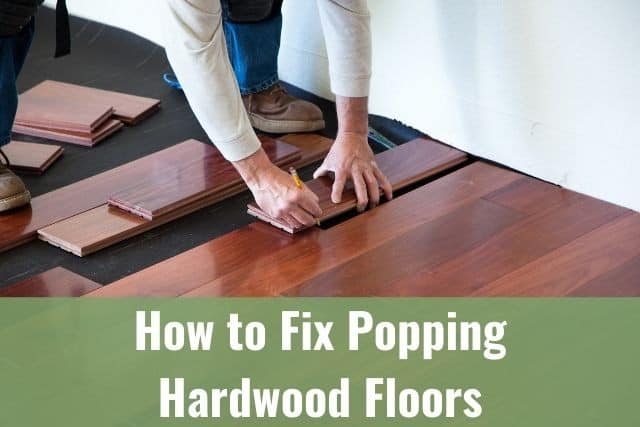When the tranquility of your home is shattered by the incessant popping of your wood floor, it can be both puzzling and irritating. Before you resort to drastic measures, let’s embark on a comprehensive journey to uncover the root causes and master the art of restoring serenity to your abode. From identifying the culprit to implementing effective solutions, this guide will equip you with the knowledge and techniques to tackle this flooring dilemma head-on.

Image: www.reddit.com
Understanding Wood Floor Popping
The first step in solving any problem is understanding its nature. Wood floors are prone to popping when the wood planks expand or contract due to changes in moisture or temperature. This movement can cause the tongue-and-groove joints to separate, resulting in those telltale popping sounds.
Identifying the Root Cause
Before jumping into repairs, it’s crucial to pinpoint the exact cause of the popping. Consider the following factors:
- Moisture: Excess moisture can swell the wood planks, causing them to expand and pop. Check for water leaks, excessive humidity, or prolonged exposure to moisture.
- Temperature: Extreme temperature fluctuations can also trigger wood movement. Sudden changes, such as turning on the heat after a prolonged cold spell, can cause the wood to expand rapidly.
- Improper Installation: If the floor was not installed correctly, it may not have enough space to expand and contract naturally. This can lead to excessive movement and popping.
- Lack of Acclimation: New wood floors should be acclimated to the environment before installation. If not properly acclimated, the wood may shrink or expand excessively after installation, resulting in popping.
DIY Fixes for Popping Wood Floors
Depending on the severity of the popping and the underlying cause, there are several DIY solutions you can try:
- Control Moisture: Use a dehumidifier to reduce excess moisture in the air. Fix any leaks and ensure adequate ventilation.
- Adjust Temperature: Avoid drastic temperature changes. Use a thermostat to maintain a consistent temperature in your home.
- Wedge Expansion Gaps: If the floor is lacking expansion space, carefully drive shims or wedges into the gaps between the wall and the baseboards to provide breathing room for the wood.
- Tighten Loose Boards: If individual planks are loose, you can try tightening them by gently tapping a nail or a brad into the tongue of the board and then countersinking it below the surface.

Image: readytodiy.com
Professional Repairs
If the DIY fixes do not resolve the popping issue, it may be necessary to seek professional assistance. A flooring specialist can assess the floor’s condition and recommend appropriate repairs, such as:
- Floor Levelling: If the floor is not level, it can create excessive stress on the joints, leading to popping. A flooring contractor can level the floor to ensure a stable base.
- Re-installation: In extreme cases, the entire floor may need to be re-installed. This involves removing the existing floor, correcting any underlying issues, and reinstalling the floor with proper expansion gaps.
Preventive Measures
To avoid future popping nightmares, consider these preventative measures:
- Use Engineered Wood: Engineered wood floors are less susceptible to moisture and temperature changes, making them less likely to pop.
- Maintain a Consistent Environment: Control moisture and temperature levels in your home to create a stable environment for your wood floor.
- Use Expansion Gaps: Allow for sufficient expansion gaps when installing your wood floor. Follow the manufacturer’s guidelines for recommended gaps.
How To Fix Wood Floor Popping Up
Conclusion
Fixing popping wood floors requires a multi-pronged approach that involves identifying the root cause, implementing appropriate repairs, and taking preventive measures. By understanding the nature of wood movement, you can effectively address this common flooring issue and restore serenity to your home. Remember, whether you embark on a DIY fix or seek professional help, a thorough understanding of the problem will lead you to a successful solution.